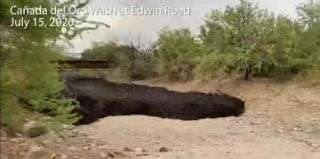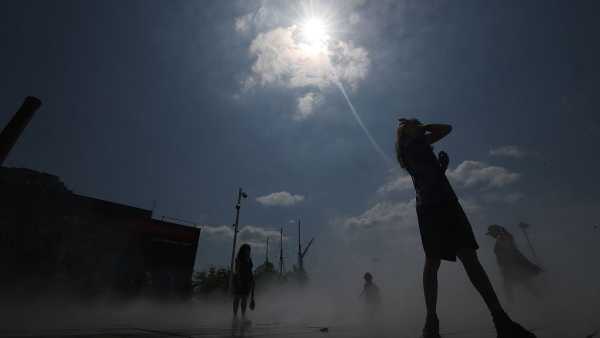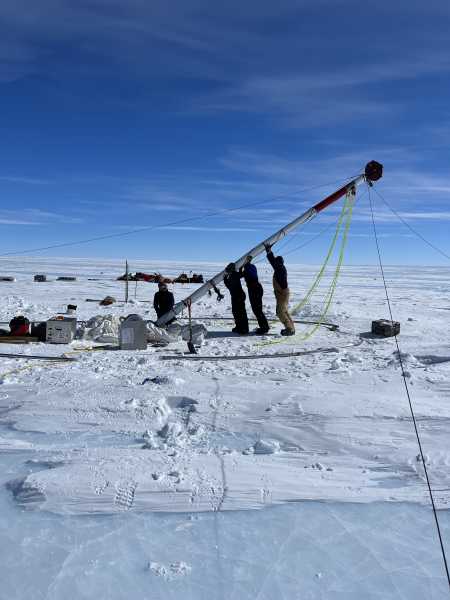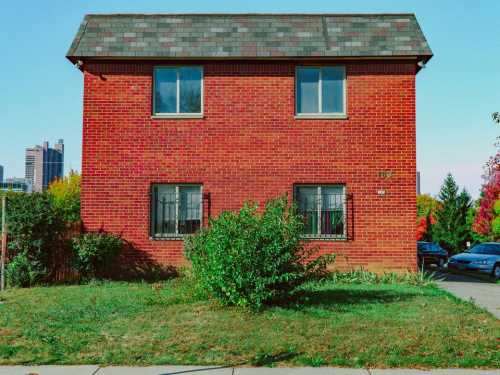
A screenshot shows the rush of the debris flow down the trail.
A camera points down a seemingly benign trail in Pima County, Arizona. But just moments into the video, something dark appears in the distance, before blanketing the dry dirt. Eventually, it resolves into a coal-black river of sticks and sludge, flowing almost as quickly as clear water.
The video, posted to Twitter by Pima County officials, shows a July 15 debris flow following a wildfire at Cañada del Oro Wash — a drainage channel and mountain biking trail in the county. According to the U.S. Geological Survey (USGS), fires can change the way rainwater flows over land. Under normal circumstances, most dirt is capable of sucking up a lot of water, which keeps flash floods from happening every time it rains. But after a wildfire, the land is no longer able to absorb as much water. And even minor rains can trigger flash floods filled with debris.
Who had this on their 2020 hellscape bingo card? pic.twitter.com/fUNvIVS7awJuly 16, 2020
“Fast-moving, highly destructive debris flows triggered by intense rainfall are one of the most dangerous post-fire hazards,” according to USGS’s California Water Science Center. “It takes much less rainfall to trigger debris flows from burned basins than from unburned areas. In Southern California, as little as 7 millimeters (0.3 inches) of rainfall in 30 minutes has triggered debris flows.”
In 2018, mudslides and debris flows after the Thomas Fire killed 13 people in two California towns after a winter storm, according to Santa Barbara Family Life.
I just got back from this exact location to check and see how the wash looks today… Officials are saying this year, the flood risk is higher due to the #BighornFire.Thanks to Billy, a nearby resident, who gave me permission to enter the area! @KVOA https://t.co/sJ77BIW7uz pic.twitter.com/LHJjdo9JV3July 17, 2020
According to KGUN 9, a local news station, this recent debris flow seems to have originated with the Bighorn Fire, which has burned about 120,000 acres (485 square kilometers) in the area.
Related
—The reality of climate change: 10 myths busted
—Top 10 ways to destroy Earth
—Images of melt: Earth’s vanishing ice
No casualties or major damage have been reported from this event, despite the dramatic footage. But the risk of heavy, debris-filled floods of this kind remains for years after a fire, according to the USGS. The largest such events usually happen in the first storm season after a major fire.
To avoid major post-fire debris disasters, the USGS examines burned regions for potential risks and sets up flood gauges to provide emergency alerts if floodwaters rush past.
As the climate changes, wildfires have become more common all over the world, bringing with them all sorts of risks, according to NASA. Research published in June by the National Bureau of Economic Research suggests wildfires burn four times more land each year in the United States than they did 40 years ago.
Originally published on Live Science.
Sourse: www.livescience.com





